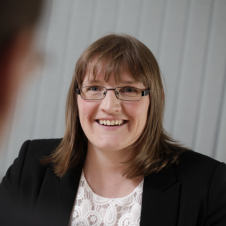Maximising your capital expenditure with the Annual Investment Allowance
This article first appeared in Farm North East.
With the introduction of the Basis Period Reform from April 2024, the way in which partnerships and self employed individuals are taxed under self assessment is changing for those who currently have an accounting year end that doesn’t align with the tax year of 5 April or 31 March.
2023/24 is the transitional year for Basis Period Reform, therefore, it is even more important to carefully consider and plan the timing of capital expenditure.
Buying machinery has always been something that farmers have enjoyed and with the onset of the Agricultural Show season it is often a time when farmers are attracted to the array of new tractors and machinery on display. These events are often used to try and negotiate a deal to invest in new or change existing machinery and equipment
The Annual Investment Allowance (AIA) is a form of capital allowance, enabling farmers to claim tax relief on eligible expenditure which is used as part of their business, including plant, machinery and equipment but specifically excluding cars.
The AIA limit was due to be reduced from £1,000,000 to £200,000 on 1 April 2023, however, in the Autumn Statement it was confirmed that the £1,000,000 limit would be permanent. The 130% Super Deduction available to Limited Companies on the purchase of new (not used) plant and machinery did expire on 31 March 2023, although this has been replaced with a 100% first year allowance, referred to as full expensing in the Budget.
AIA can be claimed on the purchase of both new and second-hand qualifying assets.
In order to get the maximum benefit from AIA, it is essential that farmers plan the timing of any expenditure carefully. If for example, it appears that you will not claim the full AIA for the current financial year, consider bringing forward future expenditure to ensure that it qualifies for relief this year.
Alternatively, if you have already used your full AIA for the financial year, consider delaying any further expenditure to the next year, to ensure you can claim tax relief on it then.
If eligible expenditure exceeds £1,000,000, a Writing Down Allowance (WDA) of 18% will be available on the excess.
There is anti-avoidance legislation to prevent a business trying to bring forward tax relief, therefore you must ensure that assets purchased on Hire Purchase are home and in use by the end of the financial year, and assets bought on normal credit terms must have been paid for within four months of the year end to attract the 100% tax relief under AIA.
It is important to remember that AIA is an accelerated tax relief and not an additional tax relief to your normal capital allowances. If assets are sold there may be a claw back of the tax relief given which could generate an unexpected tax charge.
In addition, if you sell machinery, this can increase your taxable profits. If, for example you sell a tractor which you previously claimed 100% tax relief, the full sale proceeds of the tractor will become taxable. However, if this tractor is traded in and replaced, it will often have minimal impact as the replacement tractor will in turn attract tax relief. It can however create significant tax problems to businesses that are downsizing or selling off excess assets.
AIA is a very useful tax planning tool but buying machinery and equipment should never be done just to save tax. When considering capital expenditure it is crucial that you keep in mind what qualifies for AIA and plan the timing of any expenditure carefully.
If you are unsure how the purchase or sale of assets will affect you or would like further advice, please get in touch with our Rural team.
